Why Wild Instincts Make Feral Cats Natural Survival Experts
You might think your pampered house cat has it all figured out—cozy beds, endless treats, and zero worries about where the next meal is coming from. But spend time observing feral cats, and you’ll quickly realize they possess remarkable abilities your indoor kitty has likely forgotten.
These street-smart survivors aren’t just “outdoor cats”—they’re masters of adaptation, communication, and resourcefulness that would put most house cats to shame. From navigating complex social structures to reading environmental cues we humans can barely detect, feral cats operate on a completely different level.
What makes them so capable? And what can we learn from watching these wild felines thrive in conditions that would overwhelm our domesticated companions? Let’s explore the surprising skills feral cats have perfected through necessity—and why these abilities matter more than you might think.
1. Reading Weather Patterns and Finding Shelter Before Storms Hit
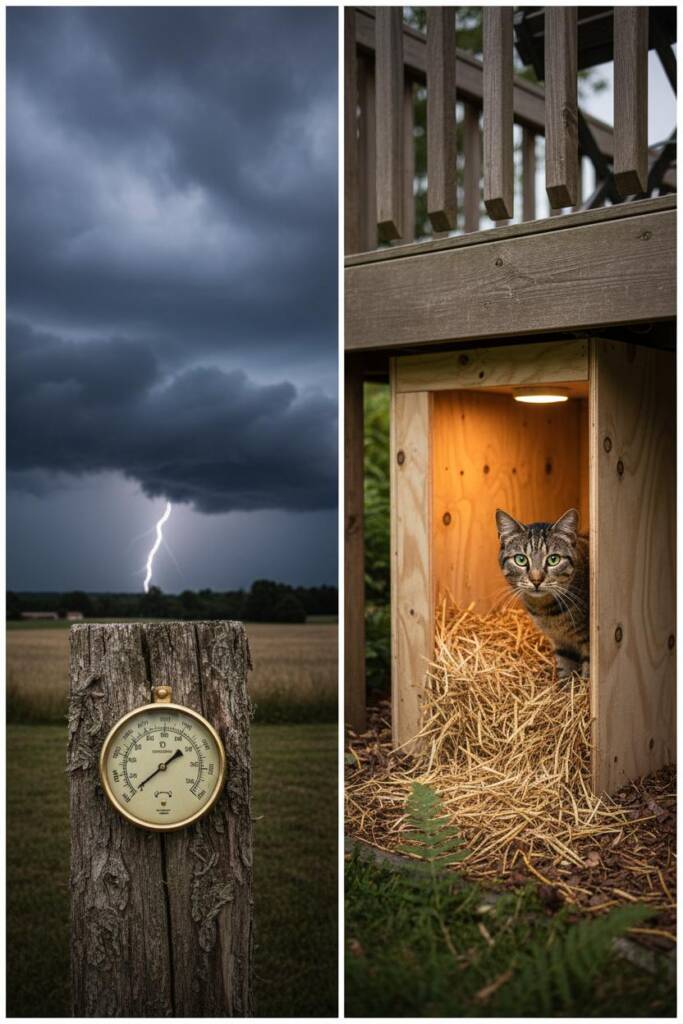
While your house cat might sleep through a thunderstorm without a care, feral cats can sense atmospheric pressure changes hours before bad weather arrives. They’ve developed an almost supernatural ability to detect incoming storms, temperature drops, and even seasonal shifts.
This isn’t just luck—it’s survival. Feral cats seek shelter proactively, finding dry spaces under porches, in drainage pipes, or beneath dense shrubs well before the first raindrop falls. They understand wind patterns and know which locations stay dry during heavy rain.
House cats, by contrast, often panic during storms because they’ve lost this predictive instinct. They react to thunder and lightning rather than preparing for it. The feral cat’s ability to read nature’s warning signs keeps them safe, dry, and one step ahead of dangerous weather conditions.
2. Hunting with Precision and Patience Most Indoor Cats Have Lost
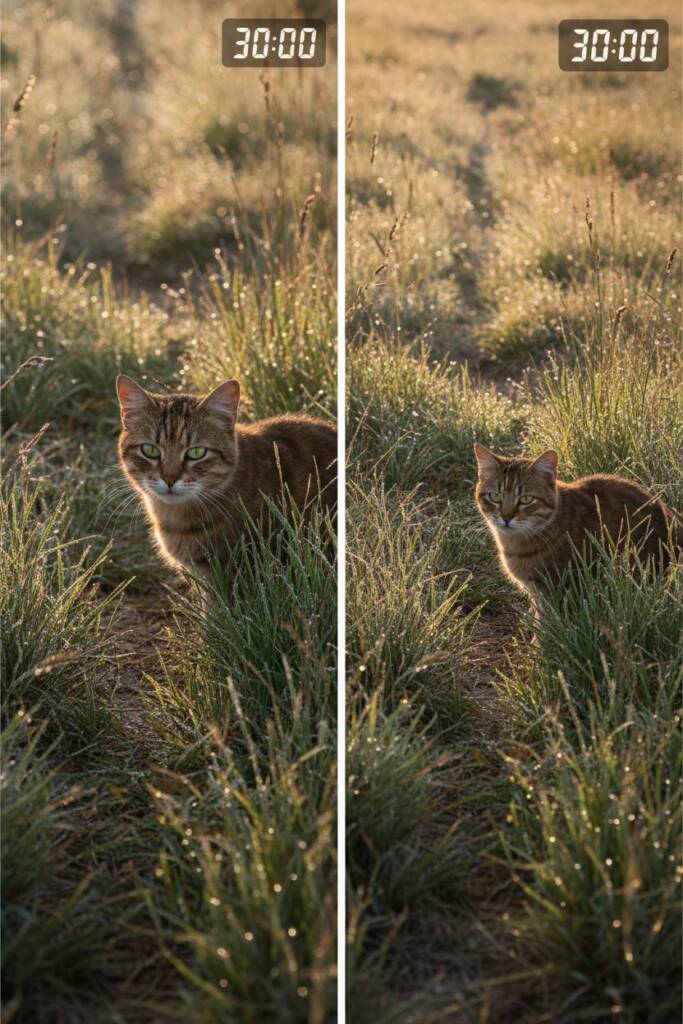
Your house cat might pounce on a toy mouse with enthusiasm, but a feral cat hunts with deadly efficiency born from genuine hunger. They can sit motionless for thirty minutes or more, waiting for the perfect moment to strike—a level of patience most indoor cats simply don’t possess.
Feral cats have perfected the art of silent stalking, understanding prey behavior, and calculating successful ambush points. They know which times of day offer the best hunting opportunities and which locations attract rodents, birds, or insects. Their success rate isn’t about play—it’s about survival.
House cats often “hunt” in short, playful bursts because they’re never truly hungry. They’ve forgotten the discipline of watching, waiting, and striking only when success is nearly guaranteed. For feral cats, failed hunts mean going hungry, so they’ve honed their skills to near perfection.
3. Establishing and Respecting Complex Social Hierarchies
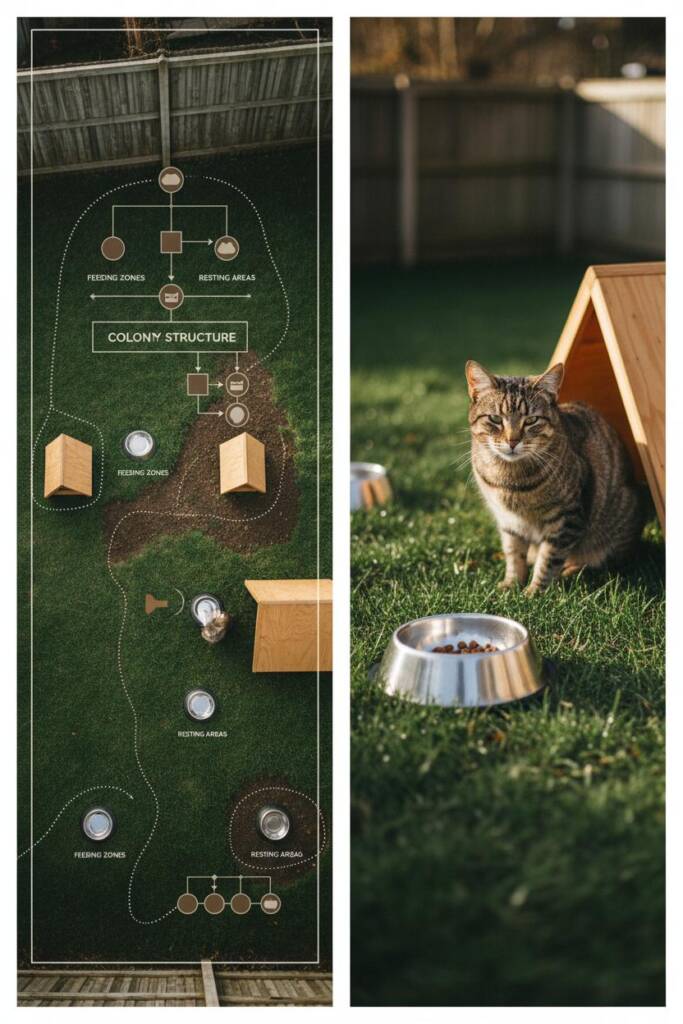
Feral cat colonies operate with surprisingly sophisticated social structures that house cats rarely encounter. There are clear hierarchies, territorial boundaries, shared feeding areas, and even cooperative kitten-rearing arrangements among related females.
These cats communicate through subtle body language, scent marking, and strategic positioning that maintains peace within the colony. They understand when to defer, when to assert dominance, and how to navigate group dynamics without constant conflict—skills that require emotional intelligence and restraint.
House cats, especially single-cat households, miss out on this social education entirely. When they do encounter other cats, they often struggle with appropriate responses because they’ve never learned the nuanced language of feline diplomacy that feral cats practice daily.
4. Navigating Large Territories with Mental Maps We Can’t Imagine
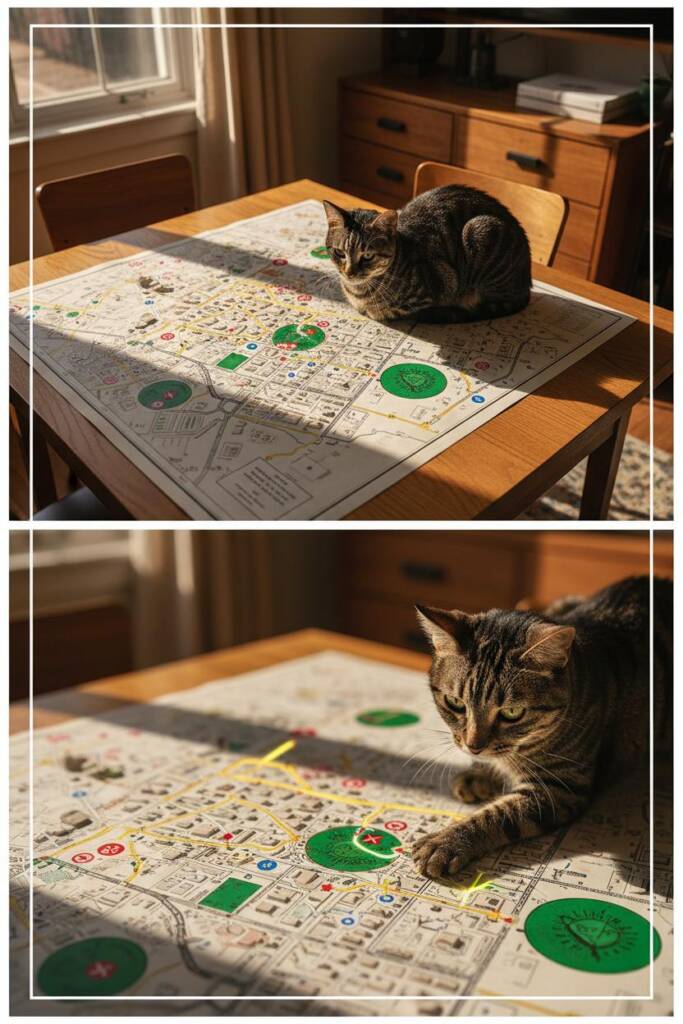
Feral cats maintain detailed mental maps of territories that can span several city blocks or even miles in rural areas. They know every hiding spot, escape route, water source, and hunting ground within their range—and they update this information constantly.
This spatial intelligence allows them to move efficiently between locations, avoid dangerous areas, and find their way home from unfamiliar territory. They memorize not just physical landmarks but also time-based patterns—when certain areas are safe, when humans are present, and when other animals pose threats.
Indoor cats live in static environments where their territory rarely exceeds a few rooms. While they know their home intimately, they lack the dynamic navigation skills that feral cats develop through constant exploration and adaptation to changing conditions.
5. Detecting Danger and Predators Long Before They Arrive
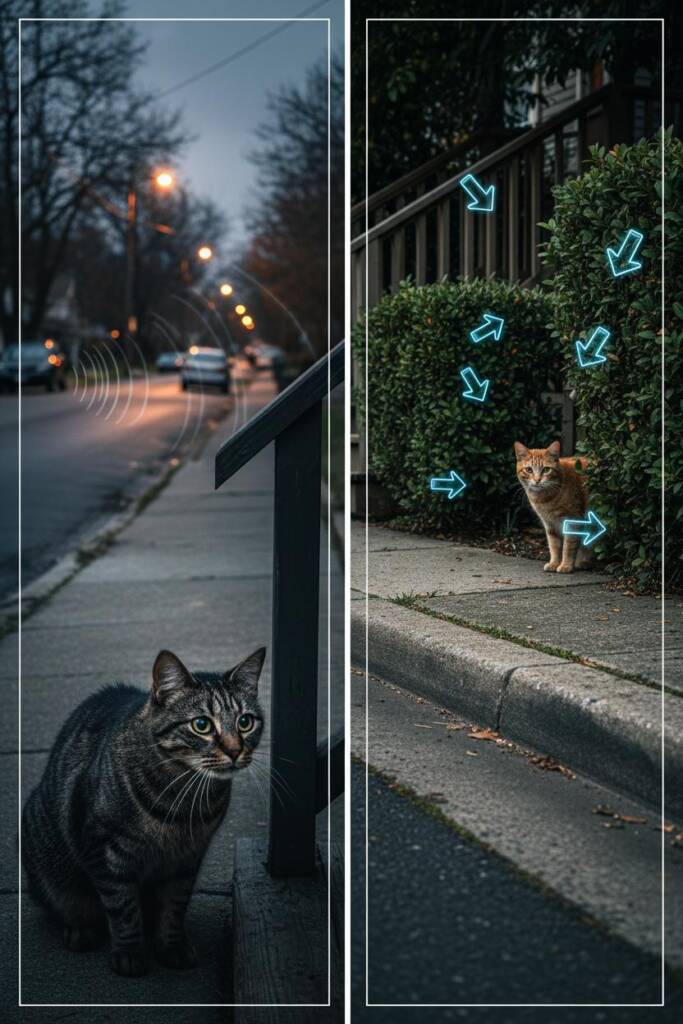
Feral cats possess hyper-vigilant awareness that keeps them alive in environments filled with threats—dogs, coyotes, cars, and humans with bad intentions. They can detect approaching danger through sound, vibration, and subtle environmental changes that house cats would completely miss.
This heightened alertness extends to recognizing patterns: which dogs are leashed and which run free, which cars slow down versus speed up, which humans are friendly versus threatening. They process this information instantly and react with appropriate escape strategies.
House cats, living in controlled environments, have dulled these threat-detection instincts. Many couldn’t identify a genuine predator if they encountered one, and their escape responses are often clumsy or misdirected because they’ve never needed to flee for their lives.
6. Regulating Body Temperature in Extreme Weather Without Human Help
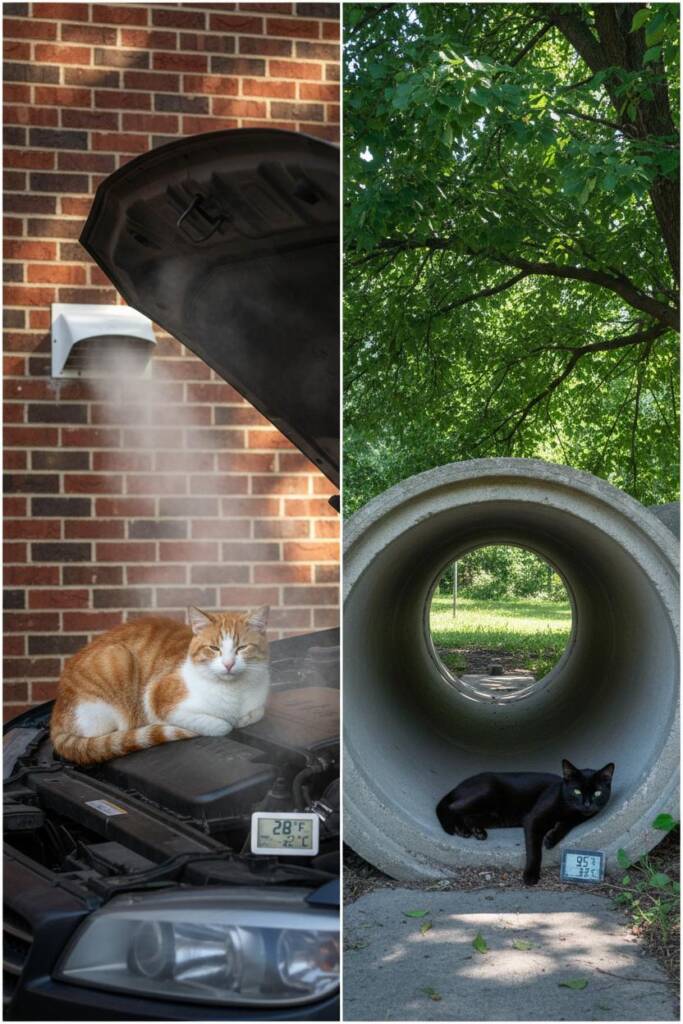
Whether it’s scorching summer heat or sub-zero winter nights, feral cats have mastered thermoregulation in ways house cats never need to learn. They know how to find cool spots during heat waves—underground spaces, shaded concrete, or areas with air flow—and warm refuges during cold snaps.
In winter, feral cats seek out heat sources like car engines, dryer vents, or sunny walls that retain warmth. They curl into compact positions that minimize heat loss and choose sheltered locations that block wind. During summer, they’re mostly nocturnal, doing heavy activity only during cooler hours.
House cats rely entirely on climate-controlled environments. Many wouldn’t survive 24 hours in extreme weather because they’ve never developed the behavioral adaptations—seeking specific microclimates, adjusting activity patterns, or finding natural shelter—that feral cats use instinctively.
7. Finding Clean Water Sources in Seemingly Impossible Places

Water is often harder to find than food, but feral cats have become experts at locating clean drinking sources. They know which puddles are safe, where condensation collects, and which outdoor faucets drip reliably. They understand that moving water is safer than stagnant pools.
These cats also recognize seasonal water patterns—where snow melts first in spring, which areas hold rain longest, and where underground seepage creates reliable moisture. They can smell water from distances that would amaze us and remember locations of dependable sources across their entire territory.
Indoor cats often ignore their water bowls, relying on wet food for hydration or drinking erratically. They’ve lost the crucial survival skill of actively seeking and evaluating water quality—something every feral cat does multiple times daily.
8. Communicating Silently Through Scent and Body Language
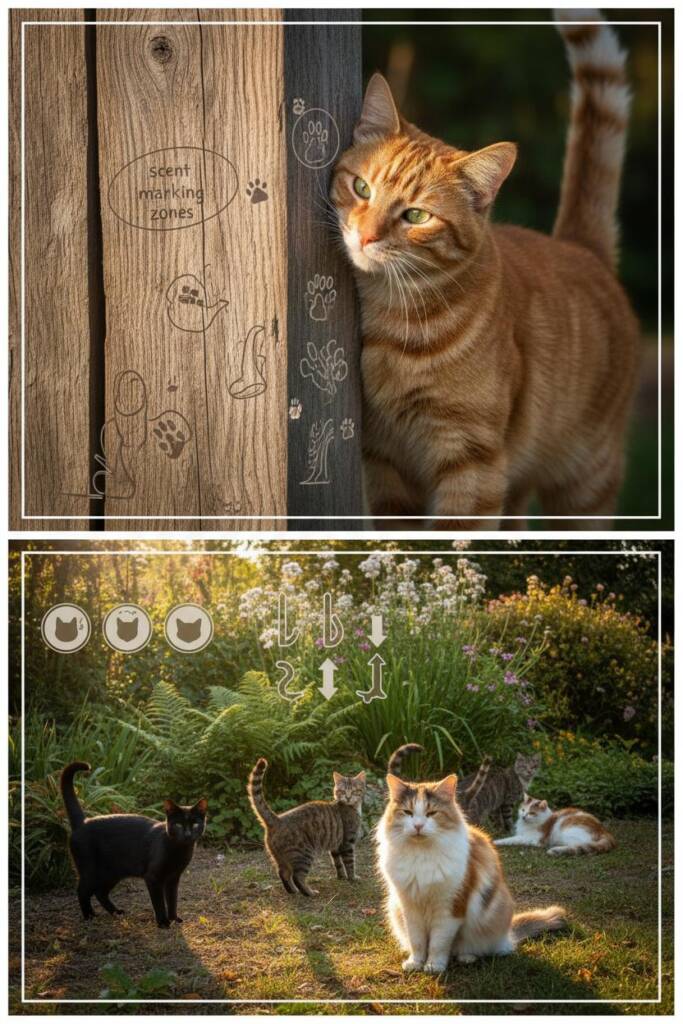
Feral cats are masters of non-vocal communication, using scent marking, ear positions, tail angles, and subtle postures to convey complex messages to other cats. They can signal territorial claims, mating availability, or warnings without making a sound—crucial when staying quiet means staying safe.
This silent communication extends to their interactions with humans. Experienced feral cats can read human body language remarkably well, distinguishing between people who mean harm and those who might offer food. They communicate their own boundaries clearly without hissing or growling unnecessarily.
House cats often become overly vocal because humans respond to meowing. They’ve learned that sound gets attention, so they’ve amplified this kitten behavior into adulthood. Feral cats, meanwhile, maintain the sophisticated silent language that makes them far more effective communicators in the feline world.
9. Raising Independent Kittens Who Survive Without Human Intervention
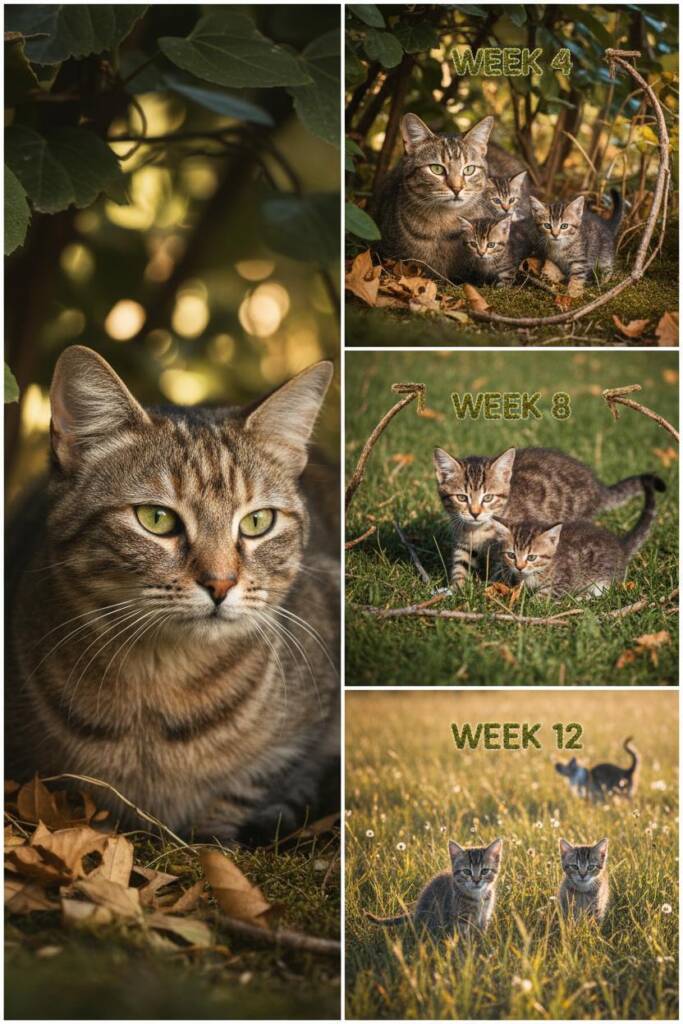
Feral mother cats teach their kittens essential survival skills—hunting techniques, danger recognition, social behaviors, and territorial navigation—in just a few short months. These kittens learn through observation, practice, and sometimes harsh lessons that prepare them for independent life.
By 12-16 weeks, feral kittens can hunt small prey, avoid common threats, and understand colony social structures. Their education is intensive, practical, and directly tied to survival. Mother cats don’t coddle—they demonstrate, supervise practice, and gradually withdraw support as kittens gain competence.
House cats raising kittens often produce dependent offspring who never fully mature behaviorally. Without survival pressures, these kittens don’t learn hunting, threat assessment, or self-sufficiency. They remain psychologically kitten-like their entire lives—which is fine for pets but would be fatal in the wild.
Simple Ways to Support Feral Cats in Your Community
Understanding what makes feral cats such skilled survivors doesn’t mean they don’t need our help. While they’ve mastered adaptation, harsh weather, illness, and reproduction challenges still threaten their wellbeing. Here are a few essential items that can make a real difference:
- Weatherproof Insulated Cat Shelter – Gives feral cats a safe refuge from rain, snow, and extreme temperatures. Look for elevated designs with removable roofs for easy cleaning and straw bedding replacement.
- Outdoor Heated Water Bowl – Prevents water from freezing in winter and keeps it fresh in summer. Essential for colonies where natural water sources are scarce or contaminated.
- Heavy-Duty Humane Live Trap – Critical for TNR programs. A quality trap makes the difference between successfully helping cats get spayed/neutered and letting reproduction cycles continue unchecked.
- Straw Bales for Bedding (Not Hay) – Proper insulation material that repels moisture and retains warmth. Never use fabric or hay, which absorb water and can cause hypothermia.
- Large Capacity Outdoor Feeding Station – Protects food from weather and wildlife while providing a consistent, clean feeding location that helps you monitor colony health over time.
What Feral Cat Skills Can Teach Us About Animal Intelligence
Watching feral cats navigate their world reveals intelligence that goes far beyond what we see in our pampered pets. These aren’t lucky survivors—they’re strategic thinkers, skilled communicators, and adaptable problem-solvers who’ve mastered their environments through observation and experience.
Understanding what feral cats do better than house cats doesn’t mean indoor life is inferior—it simply highlights how different environments shape different abilities. Your house cat may have lost some wild skills, but they’ve gained others: trust, affection, and the ability to live peacefully alongside humans.
At Sweet Purrfections, we celebrate cats in all their forms—from the wildcats surviving on city streets to the beloved companions sharing our homes. Whether you’re caring for community cats or spoiling your indoor furball, we’re here with ideas, inspiration, and products that honor the remarkable nature of felines everywhere.
Because every cat, wild or tame, deserves our respect, understanding, and appreciation for who they truly are.
Meet Sean, a fintech whiz with a penchant for pet purrs and blockchain buzz. After a decade of fintech feats, Sean’s tech talents leaped from ledger lines to litter lines, driven by a passion for pets and a vision for a more connected pet care community. With three critter companions as co-pilots, Sean launched this blog to share a treasury of pet-friendly tech tips and tales.

